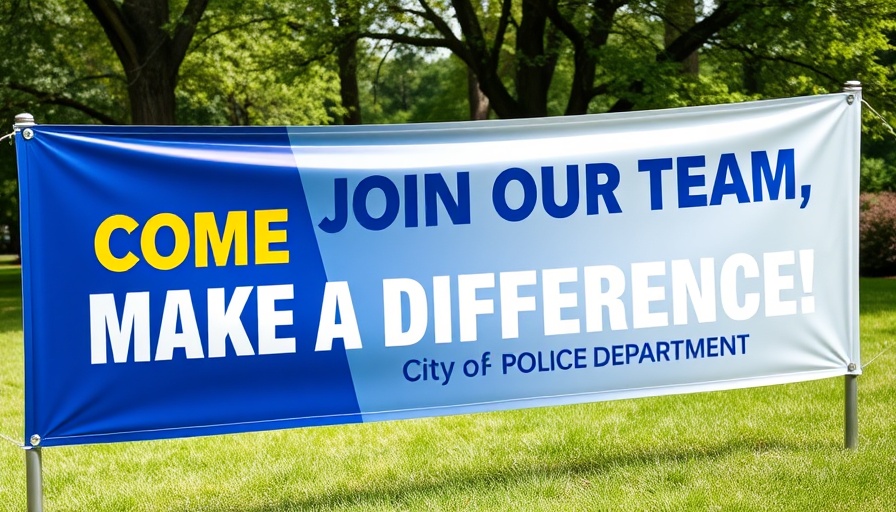
The Crisis of Police Staffing Across the U.S.
As challenges mount in the realm of public safety, the alarming trend of insufficient police staffing continues to plague agencies nationwide. Reports indicate that while recruitment might be inching upwards, the ongoing decline in officer numbers remains critical. Factors such as high turnover rates, negative public sentiment, and emerging movements like 'defund the police' contribute to the deepening crisis in law enforcement agencies.
National Impacts: A Glance at Major Cities
Indianapolis serves as a stark example where the police force has shrunk by nearly 300 officers since 2019, prompting requests for external assistance from state police. This pattern of depletion isn't confined to just one city; as National Fraternal Order of Police President Patrick Yoes highlights, "What you’re seeing in Indianapolis is repeated in city after city after city." Major urban centers are reporting vacancies in the hundreds to thousands. The situation in smaller towns, like Morris, Minnesota, is even more dire as entire police departments have disbanded, leaving communities dependent on county sheriffs.
Emotional Strain and Negative Sentiment
Several departments attribute the staffing shortages not just to recruitment failures but also to the psychological toll that policing exacts on its officers. Lengthy hiring processes only exacerbate the issue, with many agencies struggling to attract new talent amid rising public criticism. In places like Baltimore, where the police force is short by nearly 600 officers, both recruitment and retention become increasingly difficult challenges.
The Ripple Effect on Public Safety
Governor Jeff Landry’s declaration of a state of emergency in Louisiana further underscores the severity of the issue, noting a staggering 47% increase in resignations since 2019. Departments across the nation report not only shortages but also alarming declines in service quality as resources dwindle. Long Beach Police Department, experiencing its worst staffing crisis in 25 years, is illustrative of the trend, struggling to maintain adequate coverage for a growing urban population.
The Imperative for Reform
In this climate, it's crucial for policymakers to consider reforms that improve not just recruitment efforts but overall police culture and community engagement. By focusing on initiatives that prioritize officer wellness, community trust, and transparent communication, law enforcement agencies can begin to bridge these widening gaps. For instance, deploying technology for real-time crime analytics, enhancing training programs, and investing in officer mental health initiatives stand out as potential solutions to build back trust in policing.
Calls for Action in Law Enforcement
As the nation grapples with a complex landscape of public safety challenges, it is essential for law enforcement agencies, local governments, and communities to come together to implement advanced policing technologies and community outreach programs. The future of public safety may rely on these collaborative efforts to: reform policing strategies, ensure officer retention through mental health support, and equip police forces with the tools necessary to engage the communities they serve effectively.
In this pivotal moment for policing, connecting the dots between staffing initiatives and community trust strategies could lead to innovative solutions. With efforts aimed at reducing police response times and enhancing officer support, a reformed approach to public safety can emerge. If you are an advocate for better public safety practices, now is the time to demand action and engage with community leaders to support these critical reforms.
 Add Row
Add Row  Add
Add 

 Add Element
Add Element 




Write A Comment